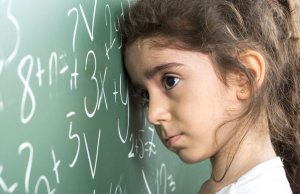Often, people hear accusations of children not knowing what a learning disability is. This is a frequent complaint by parents and teachers about children. The lessons will be explained. But nothing was written on the exam paper. Some letters are difficult to write and read. It is difficult to study statistics. Even if it is true, it will always be overwritten. The mark can only be obtained by learning to sit for a while, but not for five minutes, unnecessary rage, persist. It’s more like playing.
Many people want to accuse these children of being lazy and foolish. However, there are very few who recognize that these are learning disorders in children. Learning disability is not a disease. It is a specific condition of the body. These children have no abnormalities, which may be due to some abnormalities in the brain cells.
Let’s look at the reasons why children can drop out in their studies.
Physical challenges
The child may fall behind in learning due to lack of vision, hearing impairment and limb movement.
The lack of intelligence
At least a small percentage of children who fall behind in their studies are mentally retarded. Compared to other children of a similar age, they are far behind in understanding and using them at another time. There is no age-related mental growth.
The intelligence measurement criterion is IQ (Intelligence Quotient). Those with an IQ score of 90 to 110 are generally regarded as having average intelligence. Getting on top of it will be called more intelligent or gifted. But if the IQ score is below 70, it is referred to as Intellectual disability. Getting the proper Intelligence Quotient test can help your child’s intelligence. A child with a score below 70 may be less able to understand things than other children. It may also require more time to work out something.
Learning disabilities
If the above-mentioned level of intelligence is average or above average, and there is a very good performance in all areas expected to study, we may suspect learning disabilities. In their games, in their friendships, in their daily lives, there must be some age-appropriate functions.
Learning disabilities are classified into three categories
-
Dyslexia
Children with reading impairment and language impairment may be found. The severity of this can be different for many people. Read slowly and fumble, skip letters while reading, read unwritten letters, read irrespective of the colon, semicolon, and punctuation, and avoid lines when read
-
Dysgraphia
These are difficulties with writing and a condition characterized by a lack of coordination. This affects the child’s handwriting. Writing too slow, making mistakes, poor handwriting, insufficiency in leaving space between lines, and margin, Frequent typos, grammatical errors, Failure to re-write one word correctly, Skip punctuation, colons, and semicolons when writing, Difficult to Copy, Writing Mistakes. Make mistakes and the inability to write class notes. Being unable to think and write at the same time.

-
Dyscalculia
This is a mathematical related difficulty. Difficulty in understanding mathematical concepts, mistakes in writing numbers, difficulty in identifying and using numbers. For more information, Dyscalculia may be the cause of your child’s math difficulties
Related disorders of Learning Disabilities
Auditory Processing Disorder
Such children, even if they are loud and clear, do not recognize the difference in the vocabulary of many words. These children also have difficulty recognizing where the voice comes from.
Language processing disorder
Difficulty in analyzing language and expressing its ideas. It can also affect a child’s speech.
Non-Verbal Learning Disability
Difficulty interpreting non-verbal communication and sign language. These children may have difficulty understanding facial expressions and body language
Visual Motor Deficit
Some children find it difficult to understand, copy, or draw what they see. Children have struggled to understand the slight differences in shapes and letters and to hold a pencil
ADHD
These include the inability to concentrate on any type, difficulty in controlling behavior, and resentment. Between 30 and 50% of children with ADHD experience some form of learning disability.
Dyspraxia
The inability to control muscles can lead to difficulties in movement, language, and speech.
Causes of Learning disabilities
Learning disabilities can occur at any stage of cerebral development. It can occur during pregnancy or after birth. The risks and illnesses of the mother during pregnancy can lead to learning disabilities.
Lack of oxygen at birth, head injury, and early birth can all subsidize learning disabilities.
Shortage of oxygen at birth, head injury and premature birth can all contribute to learning disabilities.
The child may also have a learning disability due to accidents, illnesses, and epilepsy after birth.
Emotional and Social Causes of Learning disabilities
Physical or psychological abuse and the social environment experienced for children can lead to learning disabilities. These include the death of a close friend, parents’ quarrels, neglect of the home, racial or other forms of discrimination, punishment for the child in respect of learning, excessive pressure on the part of parents and teachers who are committed to learning, poor social status, and the lack of social context for learning.
Other reasons
Differentiated and hyperactive children (ADHD)
Hormone disorders
-Autism
Effects such as depression, ODD and anxiety disorder
Solution for Learning disabilities
Do you know that Albert Einstein, Leonardo da Vinci, Stephen Spielberg, and Tom Cruise all have one thing in common? That is, all of them have overcome their learning disabilities and come out victorious.
Through the collaborative efforts of teachers and parents, children with learning disabilities can achieve great success. The most important thing is to recognize the learning disability and accept it as teachers and parents. It is no use blaming children. Particular attention should be paid to identifying and promoting the talents of children with learning disabilities.
There are many institutions in the country that diagnose these learning disabilities. The extent of learning disability can be determined by examinations by experts. If a disability is detected, it can be reduced cautiously at the suggestion of expert doctors. Parents should give more time to such children to study. Consult with experienced experts who regularly complete the study for the systematic determination and resolution of learning problems.
Things to note
Care should be taken to teach such children in writing
Parents should pay more attention to their learning
Teach them to do things like count and repeat
You should give more time to write the exam and read the questions if needed
They should be given special training in schools
These children are provided with certificates of learning disability and have the opportunity to learn some of the topics that are easy to get rid of. The more you train, the better your learning disability will be.

